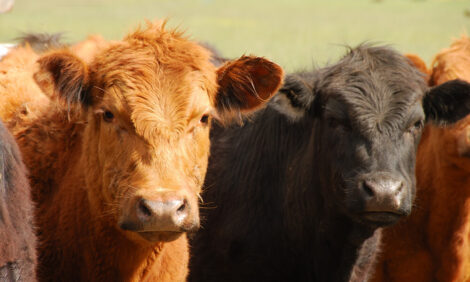



A Rating System For Grasses
NEW ZEALAND - From mid-next year, farmers will to be able to rate the different perennial ryegrass cultivars in terms of expected profit, thanks to the DairyNZ Forage Value Index (FVI).The DairyNZ FVI is a major outcome from a new industry-operated forage evaluation system currently being developed by DairyNZ and the New Zealand Plant Breeding and Research Association (NZPBRA).
DairyNZ principal scientist and project leader, Dr David Chapman says until now, farmers have had limited information on the expected profit of sowing new perennial ryegrass cultivars.
“Dairy cattle have had a well-developed breeding worth system but pastures have fallen behind in the economic evaluation stakes. This situation is about to change,” he says.
The traits that will be included in the DairyNZ FVI are seasonal pasture production (winter, early spring, late spring, summer and autumn), metabolisable energy concentration, and persistence. Each perennial ryegrass cultivar will have a DairyNZ FVI, and associated trait values and reliabilities.
Economic values, which are the expected change in profit for every unit change in a trait value, are a key component of the evaluation system.
Using farm system models, the Forage Evaluation Team (representatives from DairyNZ, NZPBRA and Lincoln University), found that for the upper North Island, extra feed in autumn had the highest predicted economic values, followed closely by summer and early spring.
The value of extra feed during these periods was double the value of extra feed in late spring. In the lower North Island, Canterbury and Southland, extra feed was most valuable in winter, early spring and autumn.
According to the seed industry National Forage Variety Trial (NFVT) data analysed by the team, since 1991, the trend for genetic gain in perennial ryegrass has been greatest for summer pasture production (+27 kg DM/ha/year), followed by autumn (+20 kg DM/ha/year), winter and late spring (both at +5 kg DM/ha/year).
There has been no increase in early spring pasture production over this time. “This result is not surprising as we have been breeding for cultivars that produce less seed head, to improve spring quality.” says Graham Kerr, member of NZPBRA Technical committee. Genetic gains in total production of +50-55 kg DM/ha/year, or +1,000 kg DM/ha since 1990 are being realised. Assuming efficient harvesting by dairy cows and persistence of DM yield, these changes in seasonal and total production are worth an estimated increase in profit of $20/ha/year.
“When yield data from NFVT trials and other sources are spliced with the economic values, we have a way of calculating economic merit of a cultivar,” says David. “The DairyNZ FVI brings this all together so that the perennial ryegrass cultivars with the best seasonal and total growth characteristics will rise to the top of rankings within a region.”
He says the DairyNZ FVI will also rate persistence, and the scheme will steadily strengthen over the next three years, as further testing is done to improve reliability of cultivar trait values and in turn their economic merit values.
TheCattleSite News Desk


